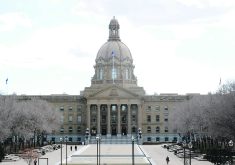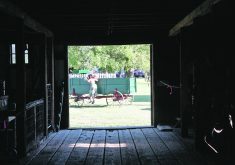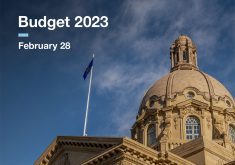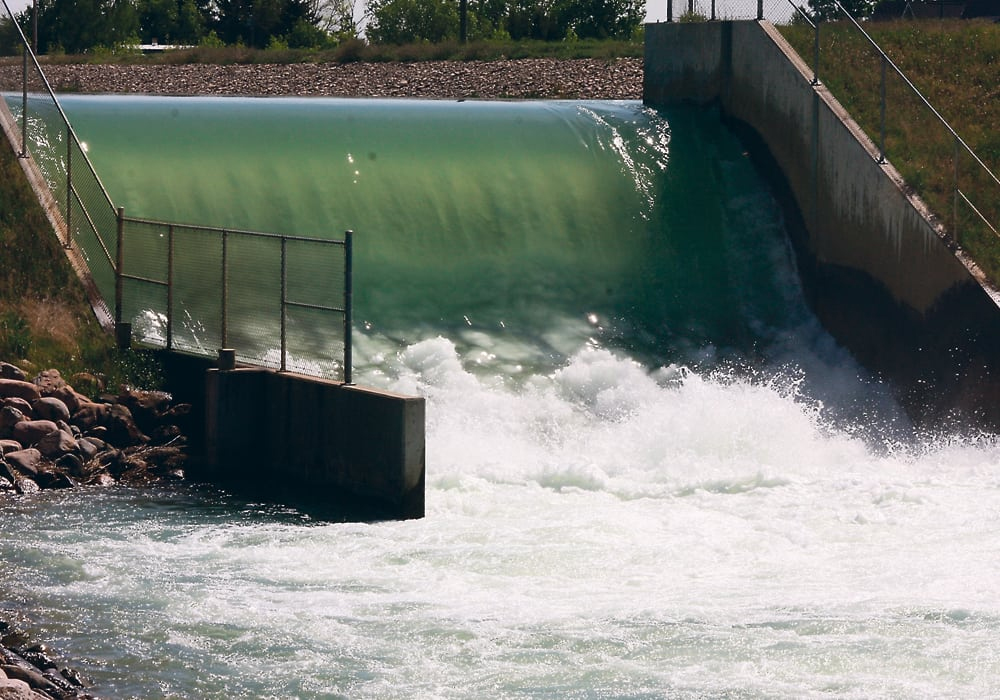Alberta farmers can anticipate more funding for energy and insurance programs, and even a few more occupational health and safety officers on the ground, according to the 2018 provincial budget.
The budget, tabled yesterday, shows Alberta will spend roughly $1.1 billion at the Ministry of Agriculture and Forestry, which is $42 million more than was spent last year.
While the spending increase includes an additional $11.7 million for crop and livestock insurance, as well as $33.2 million for energy efficiency programs, there will be reductions in other areas. For instance, it’s expected there will be about a $13.5 million reduction in grants and $2 million less for research and extension.
Read Also

Farming Smarter receives financial boost from Alberta government for potato research
Farming Smarter near Lethbridge got a boost to its research equipment, thanks to the Alberta government’s increase in funding for research associations.
“We’ve seen some efficiencies throughout the department to bring the path to balance,” said Agriculture Minister Oneil Carlier.
“We heard from Albertans that they want a path to balance and we’re on a path to do so.”
As well, $10.5 million in new funds from the Canadian Agricultural Partnership program is coming down the pipe. Carlier said the programs will be similar to ones that were in the Growing Forward 2 initiative.
“It will be continuing the good work around business risk-management and agri-insurance programs, but, as well, investing in opportunities in energy efficiency,” he said.
Producers can also expect the hiring of 10 new occupational health and safety officers this year. They will do incident investigations and engage with workplaces, including farms that employ paid workers.
“We knew we needed to increase the number of officers when we compared the number of officers here to other jurisdictions, and knowing the workload they have,” said Labour Minister Christina Gray.
“These officers will be folded into the entire system, making sure we have safe workplaces.”
As for the budget overall, Alberta is slated to have an $8.8 billion deficit for the 2018-19 fiscal year. Debt is expected to reach $54.2 billion this year.
However, the government expects to be in the black by 2023-24, said Finance Minister Joe Ceci, who outlined a plan to balance the budget.
To achieve this, the government plans to spend less on infrastructure projects in the future, continue salary freezes for non-union staff in the public sector, cut salaries and perks for executives at agencies, boards and commissions, and reduce health-care spending growth.
The plan also relies on the completion of the Trans Mountain pipeline expansion and slightly higher oil prices. The pipeline has been delayed largely because of legal challenges in British Columbia.
However, if the plan pans out, Alberta is forecasted to be left with debt worth $96 billion, which Ceci said is what it will take to ensure people don’t lose services or programs.
“I’m focusing on balancing first and, once we get to balance, we’ll continue to work on plans to address our debt.” he said.
The debt was heavily criticized by United Conservative Party leader Jason Kenney.
“We are drowning in a sea of red ink,” he said in a news release.
“The NDP continues to demonstrate that they are deeply out of touch with the concerns and priorities of everyday Albertans.”
As for other developments in the budget, the province is slated to provide $653 million in funding to municipal districts and counties this year. As well, $1 million will be earmarked for a rural bus service pilot project for communities in and around Camrose, Lethbridge, Medicine Hat, Grande Prairie, Red Deer and Athabasca.
Cannabis revenues were also laid out for the first time. The province expects to lose $90 million in the first two years but then turn around with a net income of $37 million in 2020-21. There are no details yet on how the province might help municipalities deal with cannabis in their communities.
Contact jeremy.simes@producer.com

















